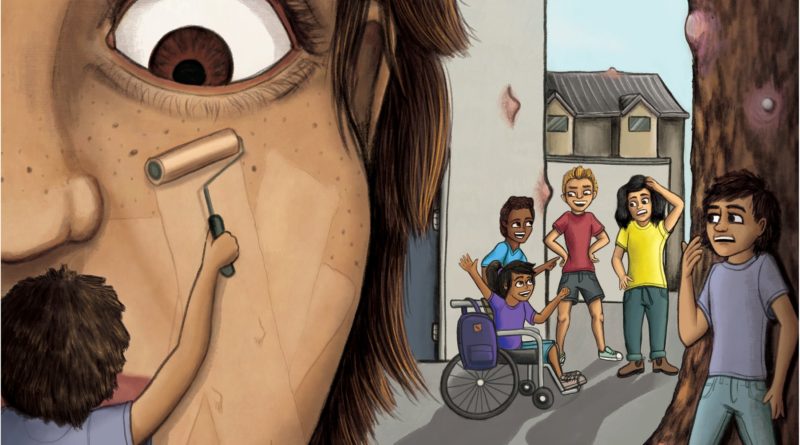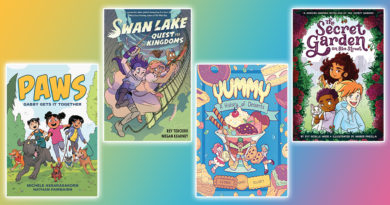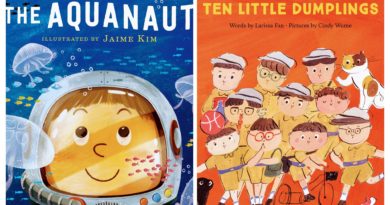New picture book The Name I Call Myself depicts a young person’s journey to self-acceptance
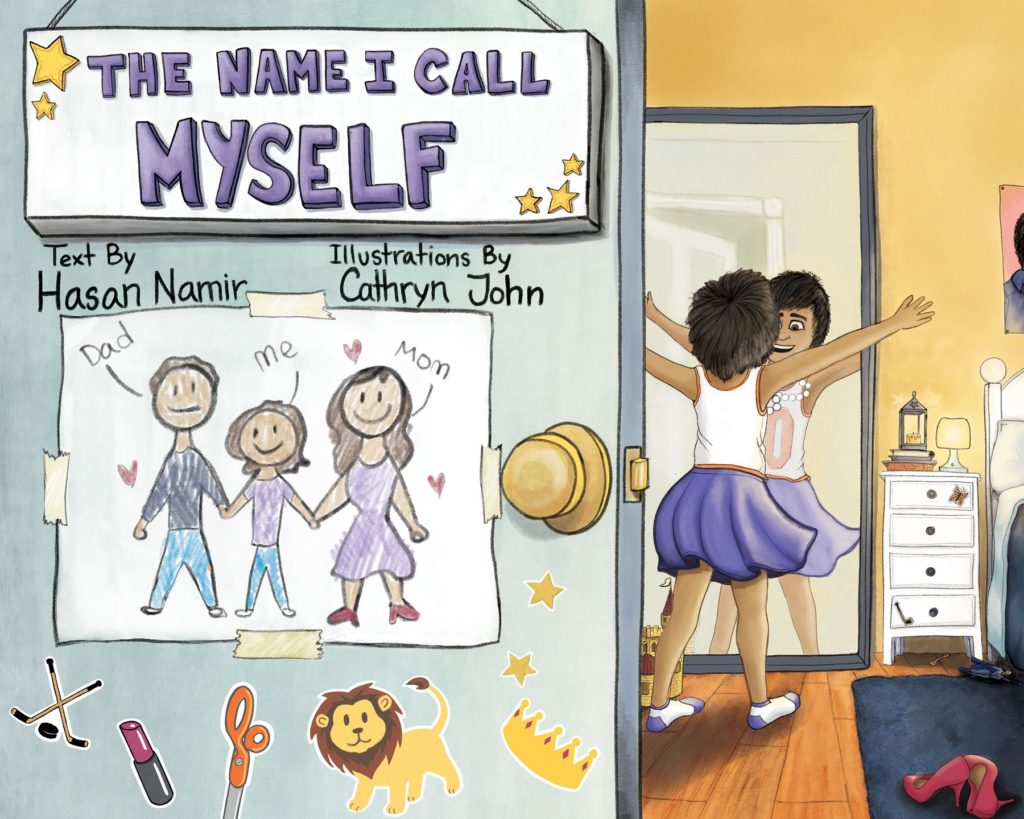
How does it feel when the things that society deems “right” feel wrong for an individual?
Hasan Namir and Cathryn John’s touching new picture book The Name I Call Myself (Arsenal Pulp Press) explores a young person’s journey of gender identity and the wonder of being seen as who they truly are.
Even at six years of age, Eddie feels conflicted. The person inside Eddie is at odds with gender norms imposed from outside. Eddie wants to play with dolls and have long hair, but it must be cut short because “that’s what a boy looks like”. Eddie plays hockey, but also yearns to try on dresses. Even the birth name “Edward” chafes, like a shoe sized for someone else. Eddie’s father reinforces society’s gender rules and roles. They feel wrong, and Eddie feels powerless . . . until at the age of 18, Eddie renounces the name “Edward” for the name “Ari.” This name fits: Ari finally feels empowered to be who they truly are, proclaiming, “I can be anyone I want to be!”
Ari’s experience echoes Namir’s. Born and raised in Iraq (and now living in Surrey, BC), he was told that he had to “act like a boy”. Like Ari, he felt “different” growing up. It was difficult to be authentic, and deep inside, he was hurting and he felt like he didn’t belong. Even worse, there were no books that illustrated his feelings and could provide hope that “it’s okay to feel different. It’s okay to have a mix of masculine and feminine thoughts and feelings, that there is absolutely nothing wrong with that.”

Though the idea for this story was in Namir’s head for a while, it was not until about a year and a half ago that he knew he wanted to write a children’s book that speaks for this experience. After writing the manuscript, he began to search for an illustrator through Facebook. A friend introduced him to the New Westminster, BC-based John, an artist with a passion for social and environmental activism. During their first session on Skype, Namir and John connected immediately. John saw how the picture-book genre was perfect for Namir’s story because the illustrations could work together with his evocative words to realize the full experience.
Illustrations speak across all languages, so they can express what’s “written between the lines”. “This is important,” notes John, “because it helps those who may have a hard time engaging with the text to place themselves within the narrative.” It also provides a point of connection with the main character and a jumping off point for questions and discussion around the text. For instance, “why are there scissors stabbed into the trees? Because the act of cutting Ari’s hair against their will felt like a violent act. It showcases how traumatic experiences like that can be.”
Namir and John worked extremely closely together. They discussed the illustrations line by line, and went over what they each imagined in their heads as they read the words. Namir describes their collaboration as a “conversation” between the author and the illustrator in answering the question, What does it feel like for a young non-binary person to navigate a world of gender conformities and binaries? This collaborative approach helped them to solidify strong concepts from the first round of draft illustrations: “There was a bit of work before we settled on a style, but once we did that, we were golden,” John recalls.
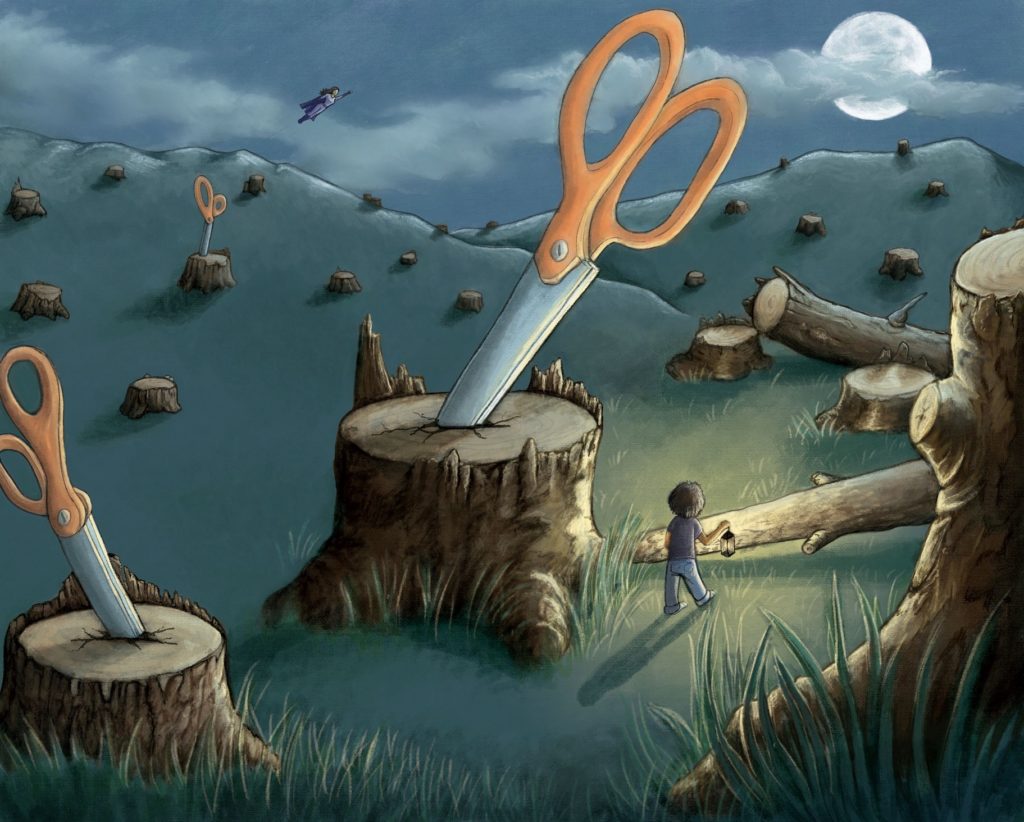
Both credit the team at Arsenal Pulp Press in providing further direction to the artwork through thoughtful and valuable feedback. Originally Namir and John were working with more of a representative approach, but they eventually realized that style did not do justice to the power of Ari’s story. Arsenal Pulp Press encouraged them to shift to a more ethereal and dreamlike approach. This was a challenge for John, and she was glad she undertook it: “I haven’t done many dreamlike concepts in the books I’ve worked on before, so this was new territory for me. I think that it allows for more visual metaphor though, and that makes the illustrations much more powerful.”
Ultimately, she succeeded in achieving a style that felt hand-drawn yet painterly: “It was our hope that this would help make the illustrations approachable and playful despite representing some difficult moments in Ari’s life.” And Namir credits the “vivid, dream-like and imaginative” illustrations with elevating his text, which is “simple and universal” and cleanly structured, thanks to his close work with editor Shirarose Wilensky: “We had to lighten [the text] up a bit and also make sure there was a structure and flow to the story.”
Once the first draft was complete, Namir and John both knew they had created something special together. Today, the two are effusive in their praise for each other, and awestruck at their joint creation. “I loved how Cathryn and I saw eye-to-eye; we had the same vision,” Namir notes. When he wrote the book, he did not know what to expect of the illustrations, so seeing John’s work was “just amazing”. He was “astonished” at the depth that the painting-like images added to Ari’s story. “It’s just incredible – and to say Cathryn is talented is an understatement! Her work is magnificent.” Namir also appreciates John’s adaptability and her ability to take feedback “amazingly well”. In turn, John remarks on Namir’s “incredible positivity and kindness”: “He’s talented, professional, on the ball and one of the most kindhearted people I know.” Hasan’s ability to take a painful experience and create something not only beautiful, but incredibly impactful from it has affected John deeply: ”It was, and continues to be, such a joy to work with him.”
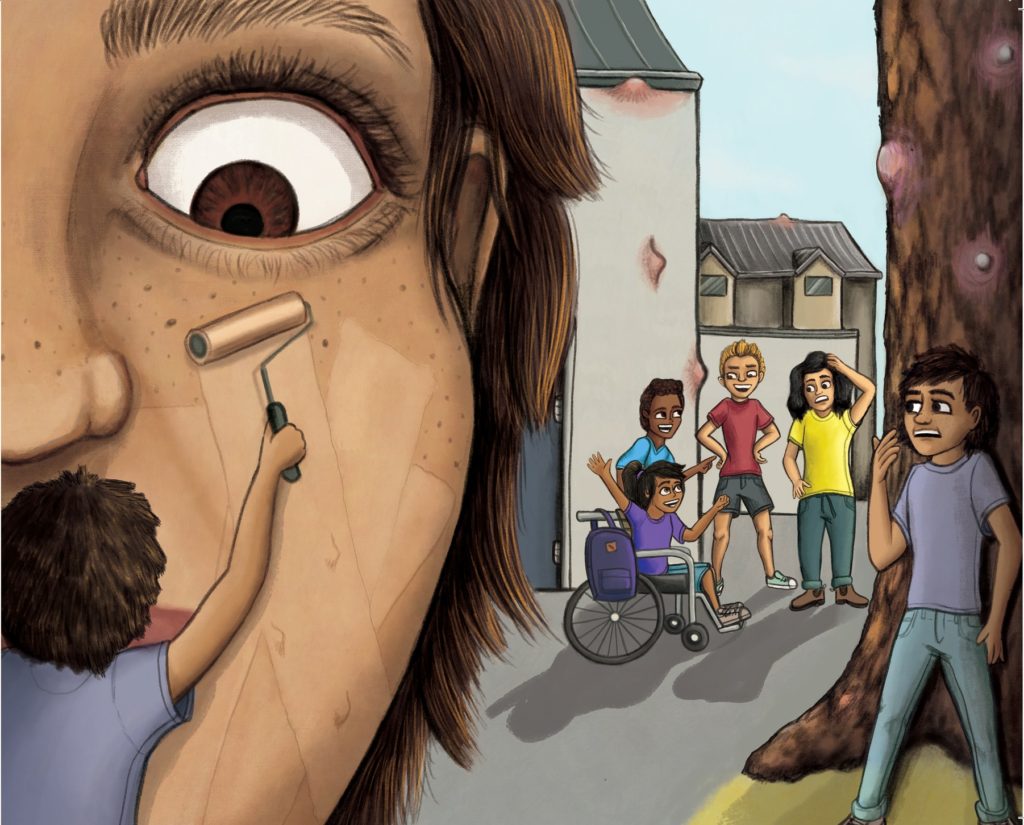
With its universal message of self-love and acceptance, The Name I Call Myself will resonate with a range of readers, children, teens and adults. It will also spark conversations and provoke reflection, making it a welcome addition to home and classroom collections. Ultimately, Namir hopes that the book can speak for all children – whether they feel the same as Ari, or know someone who does, so that through it, they can learn how to be an ally and friend. John hopes that readers will take time to think about the way in which gender binaries and constructs affect children and the people around them, every day. A practical action she suggests that we all practise is to ask peers for their preferred pronouns and offer our own. She also hopes that readers view themselves and others with kindness and acceptance when they don’t act or dress or play in the way that others assume they should.
In the end, more than anything, Namir hopes that The Name I Call Myself will strike a chord: “I hope it reaches many people’s hearts. I hope this book can bring a smile to anyone who reads it.”
©Arpita Ghosal, SesayArts Magazine, 2021
About The Author
Arpita Ghosal
Arpita Ghosal is a Toronto-based arts writer. She founded Sesaya in 2004 and SesayArts Magazine in 2012.
Visit About Us > Meet the Team to read Arpita’s full bio …

